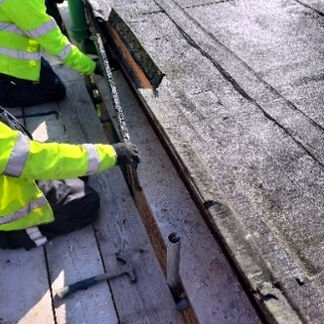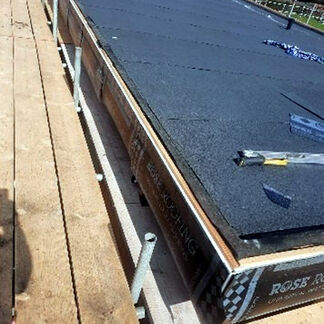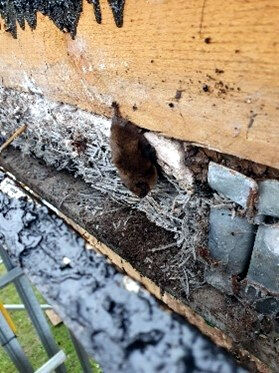
Nottinghamshire electrical substation - re-roofing work
An electrical substation building was being re-roofed due a leaking roof that was at risk of causing an internal electrical fire of the internal apparatus. The roofing contractor identified a bat during the work and immediately stopped work to take advice.
We were then contacted to provide initial advice to ensure the health of the bat and the condition of the roost was maintained.
We then did internal and external surveys of the building to identify any other suitable bat roosting features and if they were being used as roosts. We identified that a maternity roost was also present in a different part of the building which we located due to the presence of bat droppings falling out through the gap between the soffit board and the building wall.
The images below show the gap between the soffit board and the wall (Image 1) was where bats were entering and leaving the roost and the bat droppings (Image 2) were identified on a ledge below the roost entrance which was an obvious clue that more bats were using the building as a roost.
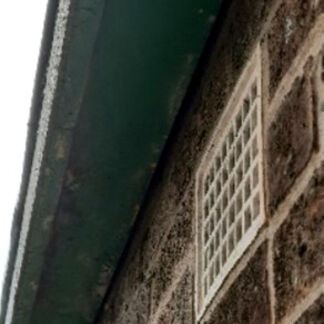
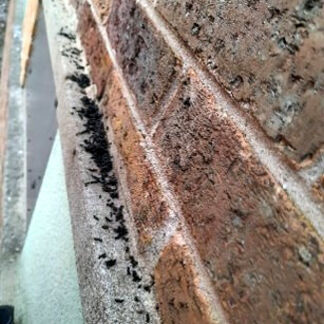
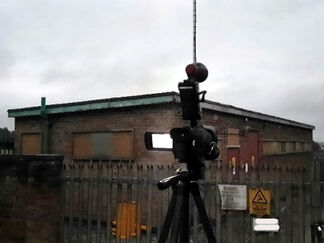
Nocturnal surveys were conducted to identify the species of bat and the number of bats using the roost. We counted over 60 Soprano pipistrelle when we reviewed the camera footage and bat detector records.
We supervised the roofing work (Image 3) once we had obtained a licence from Natural England to progress the work. The new roof was successfully completed on time (Image 4) to safely house the electrical apparatus and the conditions of the original bat roost were restored (Image 5) to ensure the bat roost could be used for many years to come.
